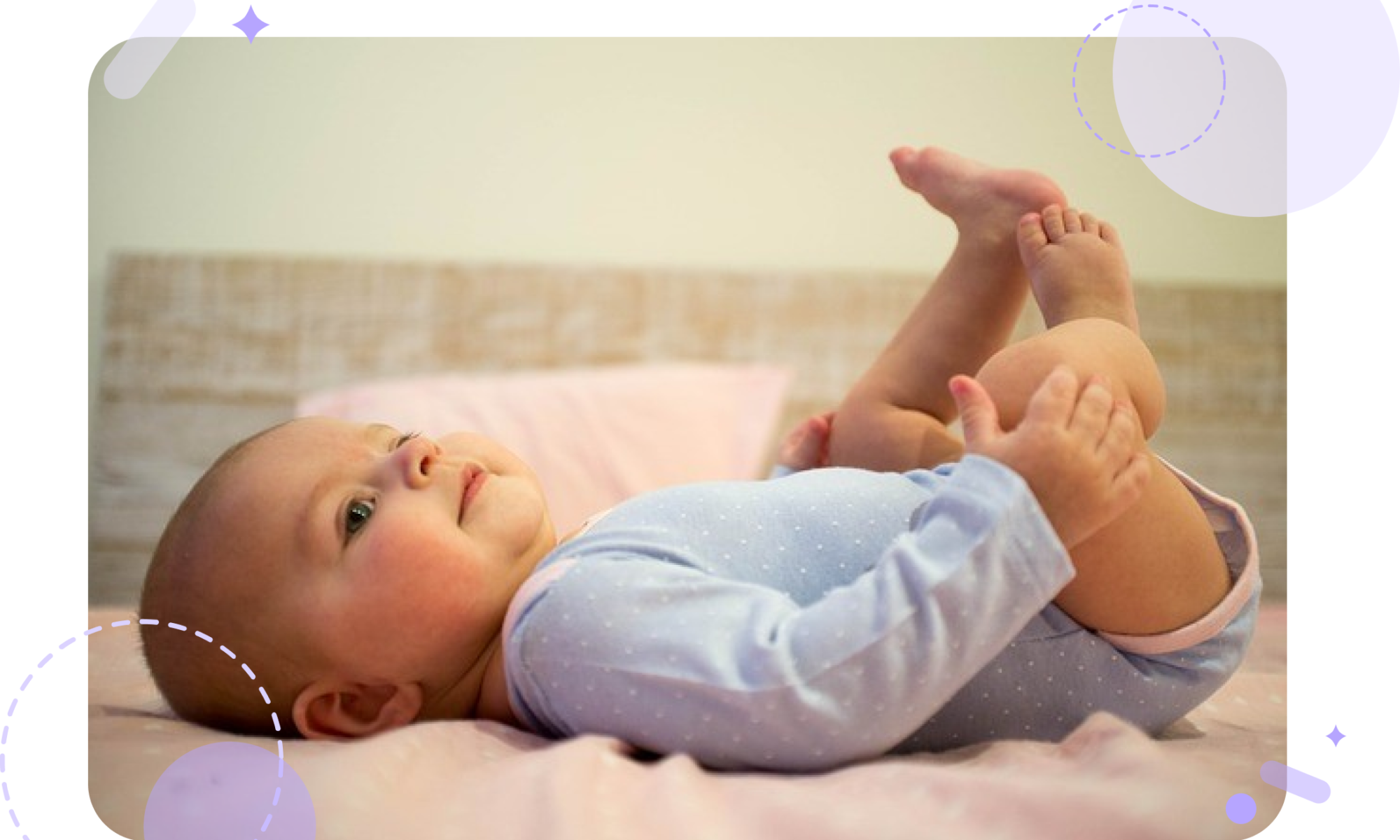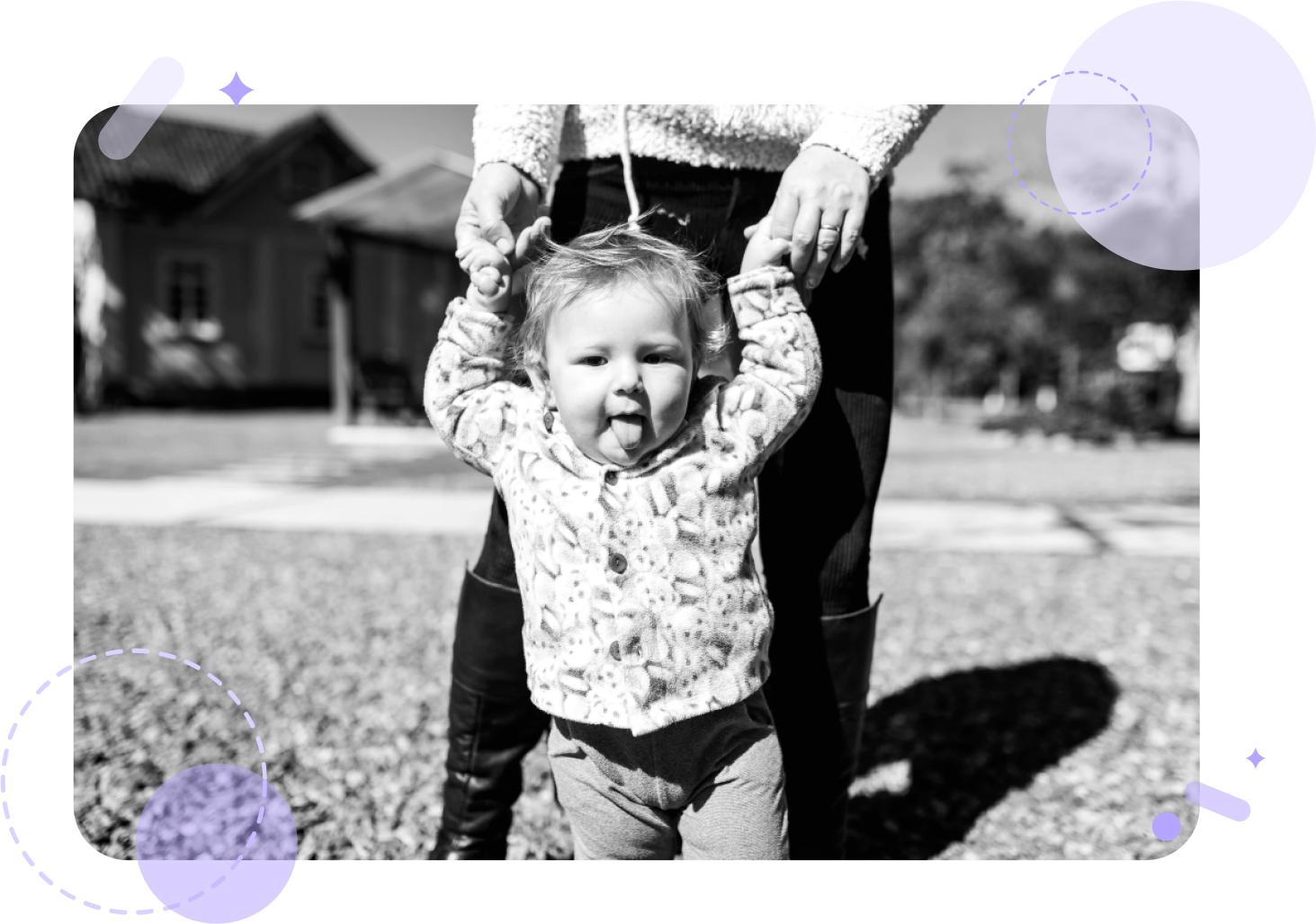
Watching your baby grow is as incredible as it is adorable. Parents marvel over the moments when their little one does something new, whether it’s turning their heads to find their parents or smiling for the first time. You might wonder what triggers many of these baby milestones, and in many cases, you have reflexes to thank for these little joyous occasions.
Reflex actions exhibited by newborns are called newborn or primitive reflexes. The presence of these responses, as well as their timely disappearance (called reflex integration), are important signs of appropriate nervous system and gross motor skills development.
Reflex integration is due to the development of more advanced brain structures in the frontal lobes (the largest brain lobe responsible for activities). As they mature, they start controlling the less advanced brain areas (such as the brain stem or medulla) that are responsible for the triggering of these reflexes.
While the presence of some reflexes beyond a certain age may indicate brain or nervous system damage, some of the reflexes can also continue well into adulthood. Below is a list of the most well-known reflexes.
This reflex occurs when a baby responds to the sudden loss of support by spreading out their arms and legs, then pulling them both in closer to the body while crying. It can be triggered by loud noises, intense light, the sensation of falling or being moved suddenly. This reflex disappears between three and six months of age once a baby is able to support their head.
Babinski Reflex
Your baby will fan out their toes and extend the big toe upwards when the soles of a baby’s foot are tickled or stroked. This reflex remains present in infants until around 12 months of age.
Stepping Reflex
This reflex occurs when the soles of a baby’s feet are touching a flat, solid surface, and the baby appears to be taking steps. This reflex is also known as the “walking” or “dancing reflex” as the baby seems to be walking on air or dancing.
This reflex disappears between two to three months of age. The Stepping Reflex helps the proper development of the leg muscles and sets up correct leg movement for your baby to take real steps several months down the road.
Make sure to support the weight of your baby’s head if you try to induce this reflex at home.
Asymmetric Tonic Neck Reflex (ATNR)
The baby will extend the arm and leg on the side to which the face is turned and bend the arm and leg on the opposite side, when the face is turned to one side for about 15 seconds.
This reflex is also referred to as the fencing reflex due to the resemblance of the position assumed by a trained fencer. It usually disappears around four months of age.
The presence of ATNR beyond six months can affect hand-eye coordination and the development of fine-tuned eye movements such as the visual tracking necessary for reading, writing, and the eyes’ ability to cross the vertical midline.
Galant Reflex
The Galant reflex causes the baby to laterally move their pelvic bone on the side that is being stimulated by stroking the skin alongside the spinal cord in a downward direction. This reflex starts fading between four and six months of age. Retention beyond this point might result in problems such as bed-wetting, fidgeting, and the inability to sit still.
Babkin Reflex
It can be observed when a baby responds with any of the following combinations: opening their mouth, turning their head, and extending or bending the limbs when pressure is applied to the baby’s palm. It usually disappears by the end of the fifth month.
Placing Reflex
When you hold your newborn in an upright position in front of a table or flat surface, you can observe this reflex when they bend their knee and raise their legs to try and step onto the table or flat surface.
Plantar Grasp Reflex
This reflex makes your baby curl their toes inwards in response to a slight poke at the base of their foot.
Tonic Neck Labyrinth Reflex
This reflex causes muscular responses from a variety of muscles, including the back, legs, arms, and hands. It can be induced by tilting the head above or below the line of the spine, while the baby is lying face up.
When you bend one of your baby’s legs towards their belly while they are lying on their back, your baby will extend the other leg in response. This reflex indicates your baby’s ability to coordinate muscle function, particularly relating to walking and maintaining balance is developing. This newborn reflex (primitive reflex) usually remains present until six weeks of age.
Suprapubic Reflex
When the pubic bone is lightly pressed or stroked, it causes the baby’s legs to extend and curl the toes inwards with their feet pointing in the same inward direction. It generally disappears by the fourth week of age as the brain matures.
Rossolimo Reflex
This reflex occurs when your baby curls all their toes inwards in response to a light tapping of the round part of the bottom of the second to the fourth toe.
Reflexes That Last Into Adulthood
- Blinking reflex: This reflex helps keep the eyes moist and can be triggered by an optical stimulus like turning off a bright light in a dark room or turning it back on.
- Coughing reflex: The Coughing Reflex helps babies clear their air passage from any irritants and blockage. This can occur when they swallow liquids that go down the wrong pipe and they respond by coughing it out on their own.
- Gag reflex: This reflex looks the same as it does in any adult. It causes the baby to thrust the tongue forward whenever the back of the throat is stimulated. This helps prevent choking while the baby learns to eat solid foods by avoiding objects entering the wrong part of the throat.
- Sneezing reflex: The purpose of this reflex is to clear out their tiny nostrils of any nasal congestion or airborne particles. It helps eject germs and particles to keep the air flowing to their lungs.
- Yawn reflex: This reflex occurs naturally in newborns. Some research suggests that babies yawn when their body needs more oxygen while other research suggests that babies yawn when they are tired.
- StatPearls: Moro Reflex
- StatPearls: Babinski Reflex
- Healthline Parenting: Why is My Newborn Sneezing So Much?
- International Journal of Pediatrics: The Grasp Reflex and Moro Reflex in Infants
- PubMed: Blink Reflex Elicited by Auditory Stimulation – Clinical Study in Newborn Infants
- The Journal of Physiology: Infant stepping – A Method to Study the Sensory Control of Human Walking
- American Academy of Pediatrics: The Significance of the Babinski Sign in the Newborn – A Reappraisal
- Archives of Medical Science: Persistence of Primitive Reflexes and Associated Motor Problems in Healthy Preschool Children
- Journal of Child Neurology: Babkin Reflex and Other Motor Responses to Appendicular Compression Stimulus of the Newborn
- Italian Journal of Pediatrics: Baby-Led Weaning – What a Systematic Review of the Literature Adds on
 Back
Back

